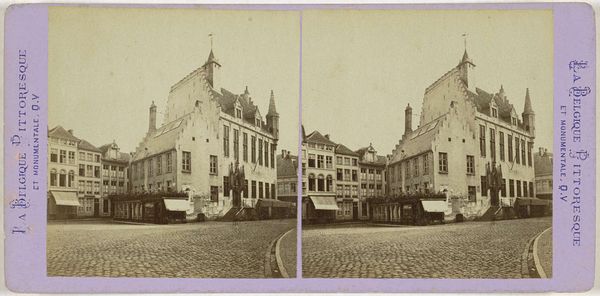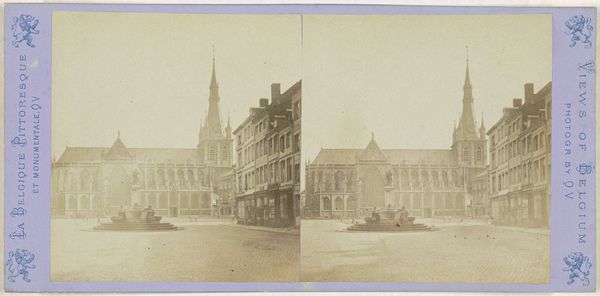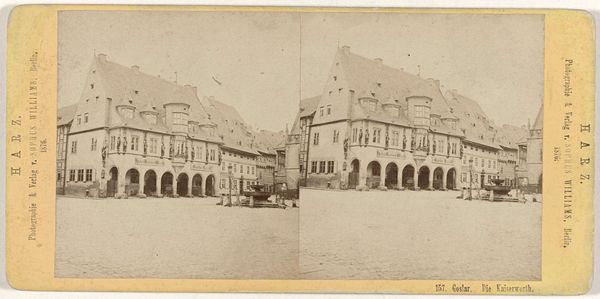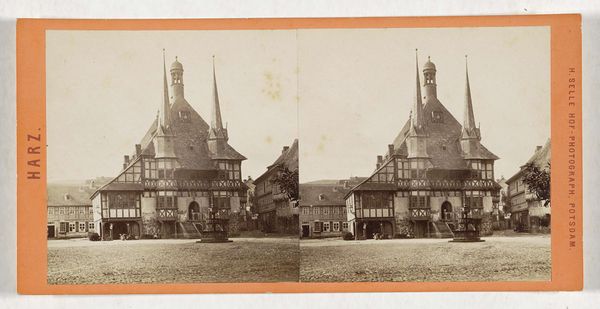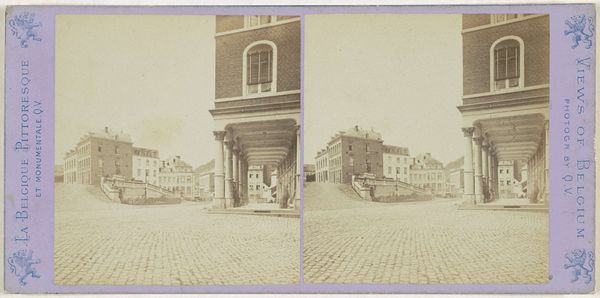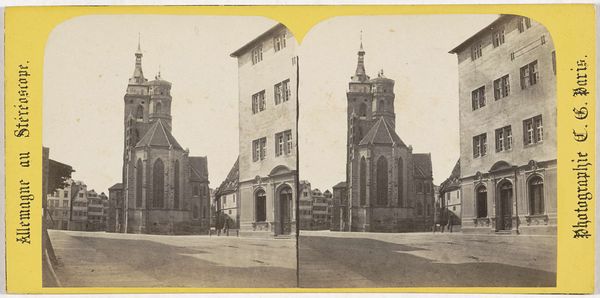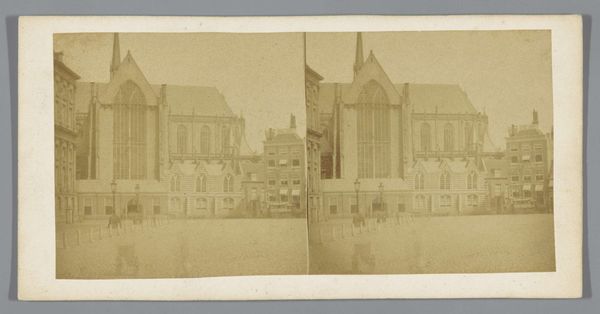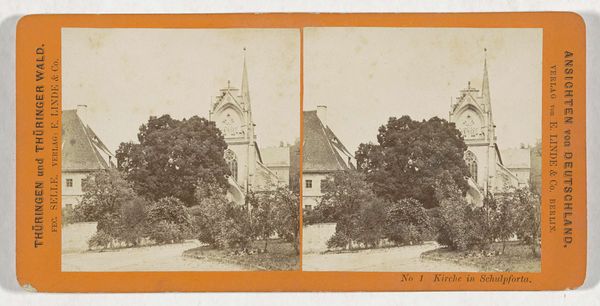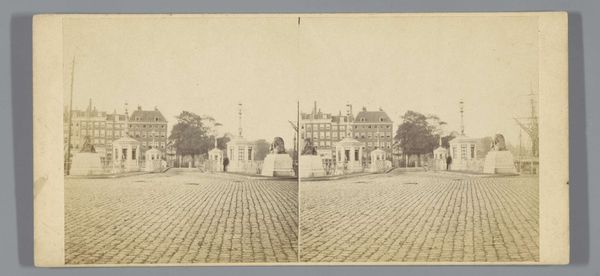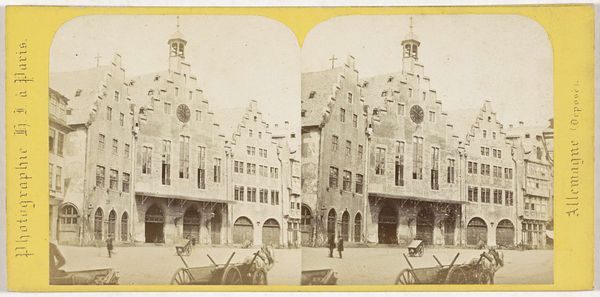
#
aged paper
#
toned paper
#
light pencil work
#
ink paper printed
#
personal sketchbook
#
coloured pencil
#
watercolour bleed
#
watercolour illustration
#
sketchbook art
#
watercolor
Dimensions: height 87 mm, width 175 mm
Copyright: Rijks Museum: Open Domain
This is a stereoscopic photograph of the Sint-Jacobskerk in Liège, made by Jules Hippolyte Quéval sometime in the mid-19th century. It's a mass-produced item, made for the burgeoning tourist trade, and was made using the collodion process. Notice the architecture: the stone blocks and the enormous scale. Now think of the labor involved, from quarrying to transportation to carving and assembly. The church itself was the product of an entire economy. Quéval, in turn, was part of a different but related economy, based on capturing and distributing images. Photography like this was a new way of seeing and possessing the world. Quéval’s photograph collapses the immense labor of the church into a single image, now preserved as an artifact of the tourist industry. It shows how new technologies of reproduction were able to take and distribute images of what otherwise took hundreds of people to make. By considering the photograph alongside the church itself, we can better understand both the artistic choices of the photographer, and the wider social context.
Comments
No comments
Be the first to comment and join the conversation on the ultimate creative platform.
